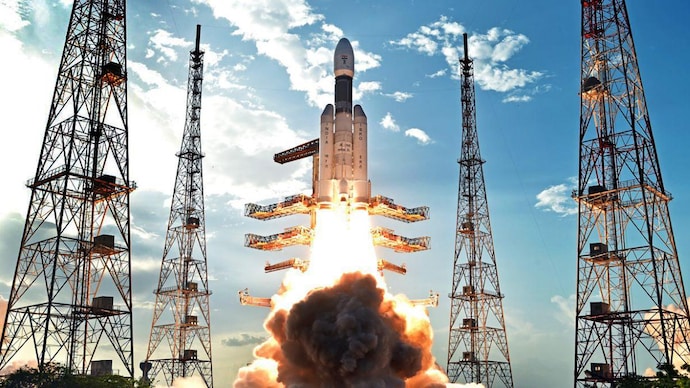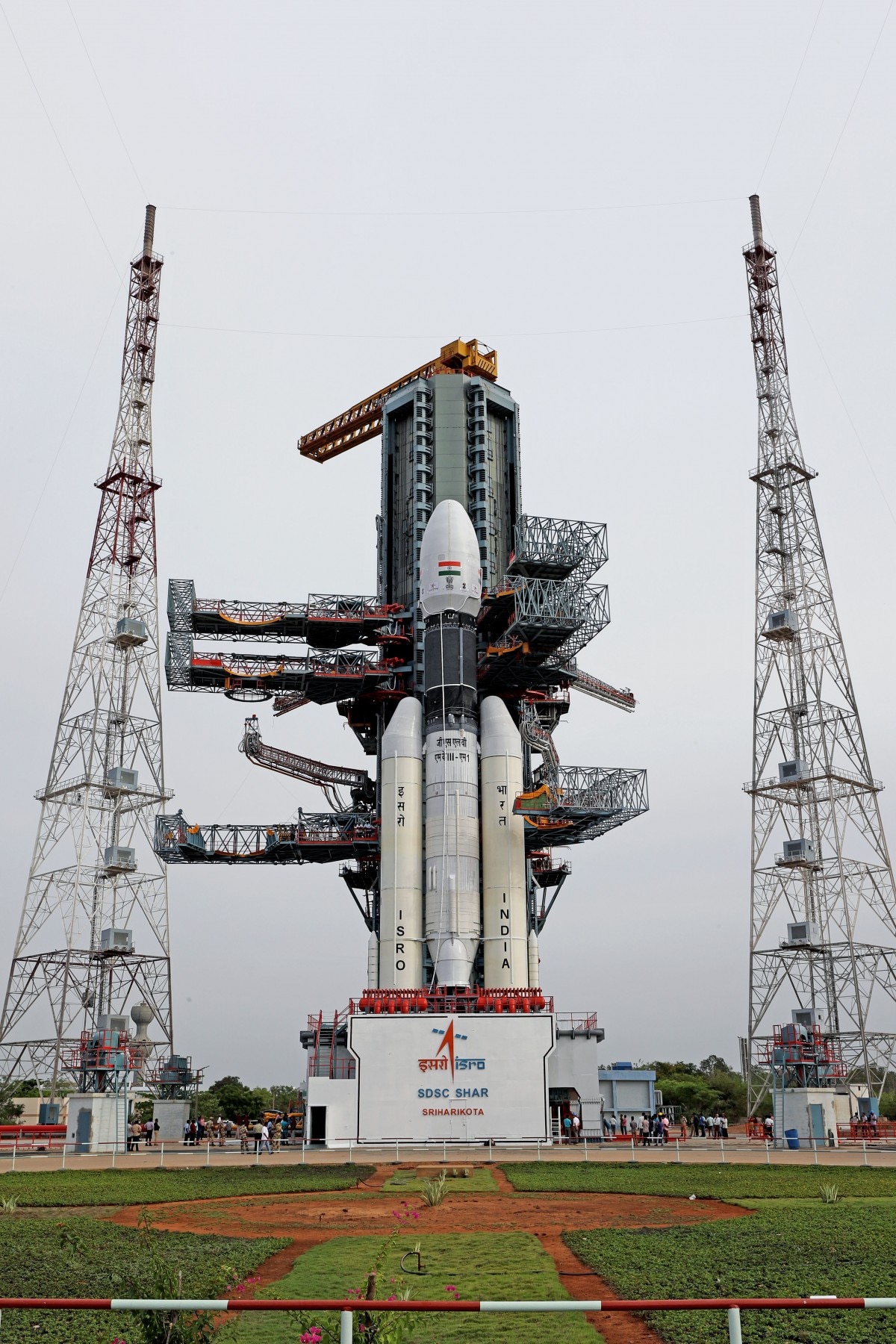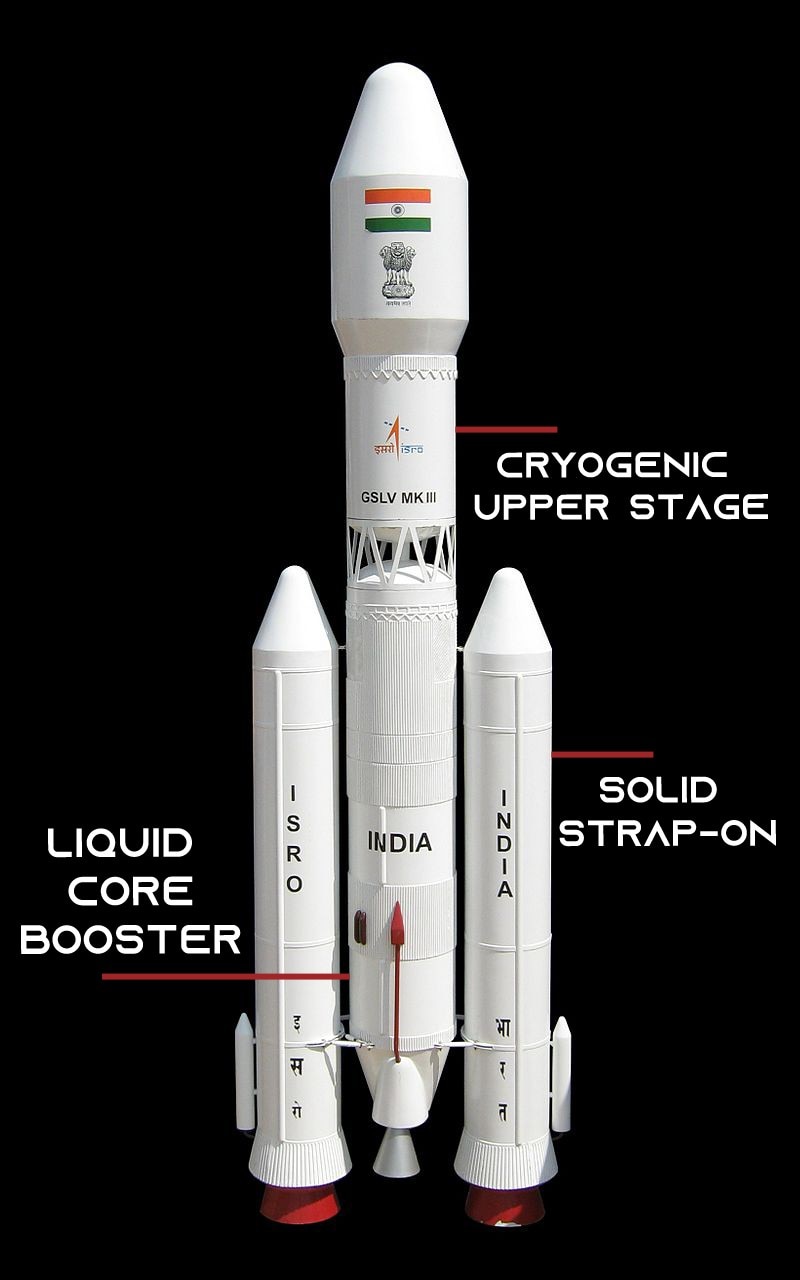Chandrayaan-2: This Bahubali GSLV Mk-III rocket will ferry lunar rover to Moon
On July 15, a GSLV Mk-III will blast off from Sriharikota, carrying with it an ambitious dream of placing a rover on the Moon

In Short
- GSLV Mk-III rocket will be used to launch the Chandrayaan-2 mission
- The GSLV Mk-III will also be the launch vehicle for a future manned space mission
- The GSLV Mk-III is the most powerful rocket developed by Isro
Fat Boy and Bahubali. Those are the two nicknames given to the Geosynchronous Satellite Launch Vehicle Mark III, or the GSLV Mk-III, the biggest and most powerful rocket in India's space garage. On July 15, Monday, the GSLV Mk-III will launch off the Bay of Bengal coast, carrying with it an ambitious dream of placing a rover on the Moon.
The GSLV Mk-III is the launcher chosen for the Chandrayaan-2 mission, which aims to land a rover on the Moon's south polar region, a feat not previously achieved by any other country. Only three countries have landed rovers on Moon -- the US, Russia and China -- but none have gone where India hopes to with its Chandrayaan-2 mission.
BAHUBALI
The GSLV Mk-III is a three-stage rocket developed by the Indian Space Research Organisation (Isro). The rocket first flew an experimental flight in 2014 and since then, the GSLV Mk-3 has been on two development flights; on both the occasions the 'Fat Boy' rocket placed satellites into orbit.
Fun fact: 'Fat Boy' was the nickname chosen by Isro's scientists for the GSLV Mk-3. However, the Telugu media began referring to the rocket as Bahubali, after the muscular hero of the eponymous fantasy Telugu film trilogy.
The Geosynchronous Satellite Launch Vehicle Mark III is a three-stage rocket:
- The first stage consists of two strap-on tanks fitted to the either side of the rocket. The tanks contain solid fuel that is burnt, providing the initial thrust to fly the rocket out of Earth's atmosphere. The strap-on tanks remain functional for 140 seconds after launch.
- The second stage consists of the core booster that ignites 114 seconds after lift-off. The core booster burns liquid fuel and is the primary source of thrust after the strap-on tanks detach from the rocket and fall back to the Earth at around 140 seconds after launch.
- The final stage is a cryogenic engine installed in the top part of the GSLV Mk-III. The cryogenic upper stage provides the last-mile thrust after the liquid core booster separates from the rocket.
The Chandrayaan-2 mission will be the most high profile mission flown by the GSLV Mk-3. The mission is especially crucial for the GSLV Mk-III series as it will establish the rocket's space-worthiness that will be really tested in the coming years.
BIG DREAMS
The Chandrayaan-2 mission is just the first of several ambitious projects that will be serviced by the GSLV Mk-III rocket.
The GSLV Mk-III is the chosen launch vehicle for Isro's highly ambitious mission to send humans to space. Under the Gaganyaan mission, Isro aims to send three Indians to space on an Indian spacecraft flying on an Indian rocket, i.e. the GSLV Mk-III.
An Indian -- Rakesh Sharma -- has in fact been to space. However, he flew as a cosmonaut onboard a Russian spacecraft. Here's the timeless video of a conversation between then Prime Minister Indira Gandhi and Rakesh Sharma in space:
The GSLV Mk-III will also result in savings for India as it would arm Isro with the ability to launch heavier satellites. The GSLV Mk-II -- the second-most powerful Indian rocket after the GSLV Mk-III -- for example can carry payloads of up to 2,200 kg. The GSLV Mk-II, on the other hand, can carry up to 4,000 kg.
Currently, India has to depend on foreign space agencies or vendors to launch extremely heavy satellites (mostly those meant to support communications). The GSLV Mk-III would do away with that need.
CHANDRAYAAN-2
All eyes right now are on the 'Spaceport of India' -- the Satish Dhawan Space Center on the Sriharikota island off the Bay of Bengal coast. At a launch pad there, a GSLV Mk-III rocket currently sits with a payload that includes a rover named Pragyaan.

Pragyaan is the centrepiece of the Chandrayaan-2 mission -- Isro aims to land Pragyaan on the Moon's south polar region, where it will conduct surface and sub-surface experiments.
The Chandrayaan-2 mission consists of three components:
- The orbiter, which, like the name suggests, will orbit the Moon. The orbiter's mission will last for around a year and it will study the outer atmosphere of the Moon.
- The lander, named Vikram, which houses the rover Pragyaan. Sometime in September, Vikram will detach from the orbiter and attempt a 'soft' landing on the Moon. Vikram is likely to land on the Moon on September 6, 2019.
- The rover, Pragyaan, which explore the lunar surface. Pragyaan can travel up to 500 metres on the lunar surface. Pragyaan's mission will last for one lunar day, which is equivalent to 14 days on Earth.
With Chandrayaan-2, Isro hopes to give India and the world a better understanding of the origins of the Moon and, as the space agency puts it, "inch towards the edge of discovery".
"Are you ready for the unknown?"

